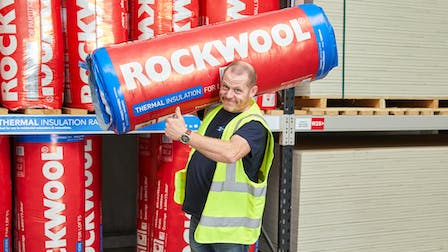
At the core of our comfort and energy efficiency, insulation works silently in the shadows of our walls, roofs, and floors. From battling the biting winter cold to shielding against sweltering summer heat, insulation is an unsung hero in our homes and buildings.
1. The Power of Thermal Insulation
Thermal insulation isn’t just about trapping air but mastering heat flow. It ensures the inside of our homes remains a sanctuary regardless of the weather outside.
- Functionality: The primary role of thermal insulation is to reduce heat transfer between the inside and outside of a structure.
- Benefits: Proper insulation can save energy, reduce energy bills, and increase indoor comfort.
2. The Might of Rockwool: A Game-Changer in Insulation
Rockwool thermal insulation is an innovative solution if you’re seeking top-tier insulation. Here’s why:
- Nature-Inspired: Originating from volcanic rocks, rock wool is a sustainable material that mimics nature’s ability to withstand high temperatures and sound.
- Versatility: Apart from its thermal properties, Rockwool also boasts superior soundproofing capabilities, making it ideal for urban areas or buildings near noise sources.
- Safety: Besides its insulating capabilities, rock wool is fire-resistant, protecting structures.
3. Ductwork Insulation: Keeping Air Flow Optimal
Behind the scenes, in the intricate maze of our buildings’ duct systems, ductwork insulation ensures our HVAC systems run efficiently:
- Purpose: This type of insulation keeps the air at its desired temperature as it travels throughout a building, preventing unnecessary energy loss.
- Why It’s Essential: Without it, the energy used to heat or cool air could be wasted as the air travels through ducts. A well-insulated duct system means a more efficient HVAC system and reduced energy costs.
4. The Eco-Friendly Aspect: Insulation and Sustainability
When we think of green solutions for homes and buildings, insulation might not be the first thing that springs to mind, but it’s a cornerstone of eco-friendly construction.
- Carbon Footprint Reduction: Proper insulation means less energy is required to heat or cool a space, drastically reducing carbon emissions.
- Long-Term Savings: Beyond the immediate reduction in energy bills, well-insulated buildings demand less from heating and cooling systems, prolonging their lifespan.
5. Health Benefits: More than Just Comfort
It’s not just about the comfort of steady temperatures; insulation impacts our health:
- Air Quality: Quality insulation materials can prevent the ingress of pollutants and allergens, ensuring cleaner indoor air.
- Mould Prevention: By keeping walls and ceilings at stable temperatures, insulation can prevent condensation build-up, a leading cause of mould growth.
6. Navigating the Options: From Synthetic to Organic
The world of insulation materials is vast, offering options tailored to different needs:
- Fibreglass Insulation: A popular choice due to its non-flammable properties and effective thermal performance.
- Spray Foam Insulation: Provides a tight seal and has excellent longevity, but installation requires more expertise.
- Sheep Wool Insulation: An eco-friendly and highly effective natural option in thermal and acoustic insulation.
7. Retrofitting: Giving Older Buildings a New Insulative Lease on Life
Historical or older structures might not have been built with modern insulation standards, but that doesn’t mean they can’t be upgraded:
- Assessment is Key: Before retrofitting, it’s essential to assess the current insulation’s state and the building’s specific needs.
- Balancing History with Modernity: It’s crucial to find solutions that maintain the structure’s integrity while enhancing energy efficiency, especially in historical buildings.
8. Soundproofing: The Acoustic Dimension of Insulation
Insulation isn’t just for temperature control. Its capabilities extend to managing sound.
- Sound Absorption: Certain insulation materials can dampen sound, helping create quieter indoor environments.
- Types: Acoustic panels, batts, and even rockwool thermal insulation are effective choices.
9. Fire Safety: Insulation as a Guardian
Not all insulation is created equal, especially when it comes to fire resistance:
- Fire-Resistant Materials: Some insulation options are designed to slow the spread of fire, enhancing building safety.
- Materials to Consider: Mineral wool, fibreglass, and certain foams can serve as barriers against flames.
10. Economic Implications: The Return on Investment
Insulation, beyond its immediate functionalities, can be seen as an investment:
- Property Value: Well-insulated homes often fetch higher market prices due to reduced long-term energy costs.
- Longevity: Quality insulation can last decades, ensuring savings over the building’s lifespan.
The Big Picture: Why Insulation Matters Now More Than Ever
With rising energy costs and a growing emphasis on sustainability, the importance of high-quality insulation cannot be understated. As we combat climate change and seek to reduce our carbon footprint, the insulation choices we make today will shape our energy consumption patterns for years to come. Whether keeping our homes cosy or ensuring our offices are energy-efficient, insulation is a linchpin in creating sustainable, comfortable spaces.




 POSTED BY
POSTED BY 

